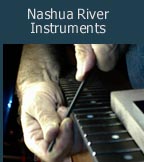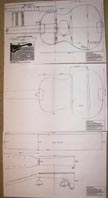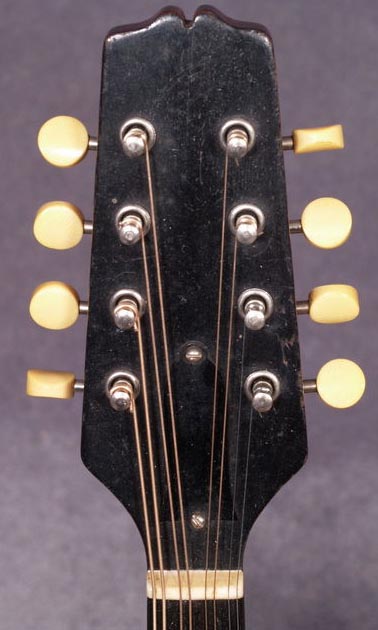|
Here’s the set of plans I drew from the Mandolinetto Eddie Sheehey loaned me.’ Click the image for a larger view. If anyone is inclined to build one of these, email me and I’ll send you a copy of the plans, which have thus far found their way to builders in several U.S. States, England, Scotland, and Ireland.
The headstock measurements and peghole spacing are true to the original instrument. However, there is a need for modification to accommodate modern mandolin tuning machines, which have the tuning post below the worm gear. This instrument and most mandolins of its vintage had the tuning post above the worm gear. You can’t simply install modern tuners upside down because they would work in reverse of every other stringed instrument -- you’d end up loosening when you meant to tighten, which would quickly drive you nuts.
Because of the reversed relationship of peg to worm gear, the whole tuning assembly of modern style tuners shifts north by about 1/2 inch, causing the baseplate to extend beyond the top of the headstock--leaving brass sticking out into empty space beyond the wood.
|



